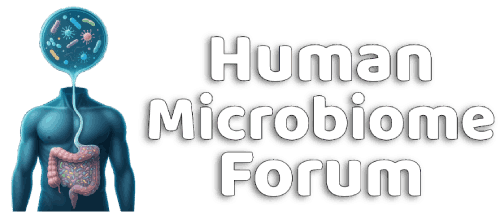Michael Harrop
Well-known member
George Leonard, a co-author of one of the studies and chief scientist at Ocean Conservancy, joins John Yang to discuss the findings https://www.pbs.org/newshour/show/why-you-may-be-eating-and-drinking-more-microplastics-than-you-thought
Articles:
Articles:
- Diet for a Sick Planet: Studies Find More Plastic in Our Food and Bottled Water. Researchers find we can now wash down the microplastics in our tofu, or steak, with a much larger quantity of nanoplastics in bottled water than previously known.
- It’s Not Just Seafood: New Study Finds Microplastics in Nearly 90% of Proteins Sampled, Including Plant-Based Meat Alternatives. Researchers at Ocean Conservancy and University of Toronto estimate that American adults could be consuming up to 3.8 million microplastics per year from protein alone.
Significance
Micro-nano plastics originating from the prevalent usage of plastics have raised increasingly alarming concerns worldwide. However, there remains a fundamental knowledge gap in nanoplastics because of the lack of effective analytical techniques. This study developed a powerful optical imaging technique for rapid analysis of nanoplastics with unprecedented sensitivity and specificity. As a demonstration, micro-nano plastics in bottled water are analyzed with multidimensional profiling of individual plastic particles. Quantification suggests more than 105 particles in each liter of bottled water, the majority of which are nanoplastics. This study holds the promise to bridge the knowledge gap on plastic pollution at the nano level.
Abstract
Plastics are now omnipresent in our daily lives. The existence of microplastics (1 µm to 5 mm in length) and possibly even nanoplastics (<1 μm) has recently raised health concerns. In particular, nanoplastics are believed to be more toxic since their smaller size renders them much more amenable, compared to microplastics, to enter the human body. However, detecting nanoplastics imposes tremendous analytical challenges on both the nano-level sensitivity and the plastic-identifying specificity, leading to a knowledge gap in this mysterious nanoworld surrounding us.
To address these challenges, we developed a hyperspectral stimulated Raman scattering (SRS) imaging platform with an automated plastic identification algorithm that allows micro-nano plastic analysis at the single-particle level with high chemical specificity and throughput. We first validated the sensitivity enhancement of the narrow band of SRS to enable high-speed single nanoplastic detection below 100 nm. We then devised a data-driven spectral matching algorithm to address spectral identification challenges imposed by sensitive narrow-band hyperspectral imaging and achieve robust determination of common plastic polymers. With the established technique, we studied the micro-nano plastics from bottled water as a model system.
We successfully detected and identified nanoplastics from major plastic types. Micro-nano plastics concentrations were estimated to be about 2.4 ± 1.3 × 105 particles per liter of bottled water, about 90% of which are nanoplastics. This is orders of magnitude more than the microplastic abundance reported previously in bottled water. High-throughput single-particle counting revealed extraordinary particle heterogeneity and nonorthogonality between plastic composition and morphologies; the resulting multidimensional profiling sheds light on the science of nanoplastics.
Highlights
- We observed microplastic contamination ≥45 μm in 16 U.S. protein products.
- Highly-processed products contained the most microplastics per gram.
- Microplastic contamination did not differ between brands or store types.
- Mean U.S. adult exposure from consuming these proteins is >11,000 microplastics/year.
- Maximum U.S. adult exposure from these proteins is ∼3.8 million microplastics/year.
Abstract
We investigated microplastic (MP) contamination in 16 commonly-consumed protein products (seafoods, terrestrial meats, and plant-based proteins) purchased in the United States (U.S.) with different levels of processing (unprocessed, minimally-processed, and highly-processed), brands (1 – 4 per product type, depending on availability) and store types (conventional supermarket and grocer featuring mostly natural/organic products).
Mean (±stdev) MP contamination per serving among the products was 74 ± 220 particles (ranging from 2 ± 2 particles in chicken breast to 370 ± 580 in breaded shrimp). Concentrations (MPs/g tissue) differed between processing levels, with highly-processed products containing significantly more MPs than minimally-processed products (p = 0.0049). There were no significant differences among the same product from different brands or store types.
Integrating these results with protein consumption data from the American public, we estimate that the mean annual exposure of adults to MPs in these proteins is 11,000 ± 29,000 particles, with a maximum estimated exposure of 3.8 million MPs/year.
These findings further inform estimations of human exposure to MPs, particularly from proteins which are important dietary staples in the U.S. Subsequent research should investigate additional drivers of MPs in the human diet, including other understudied food groups sourced from both within and outside the U.S.
- Format correct?
- Yes
